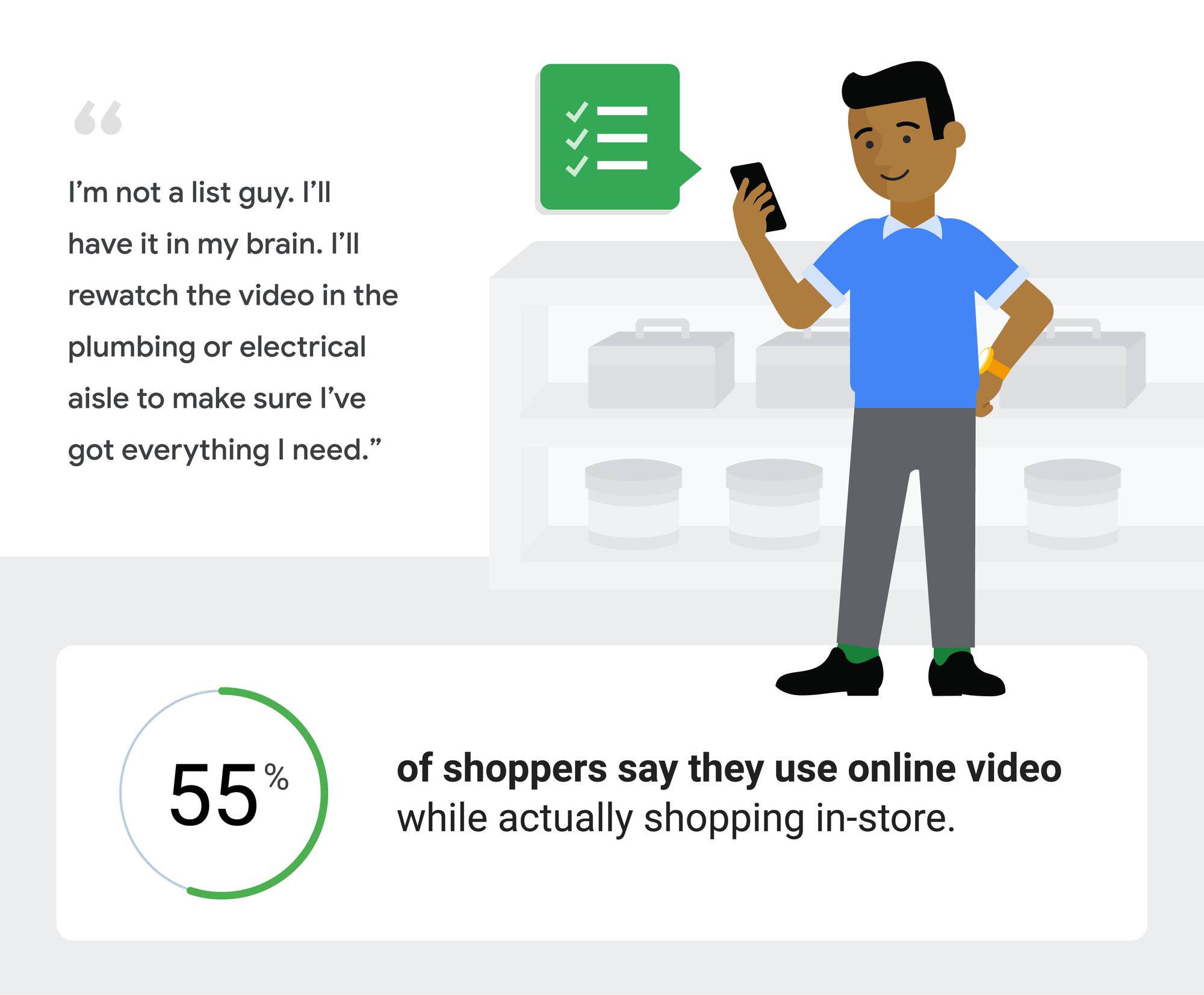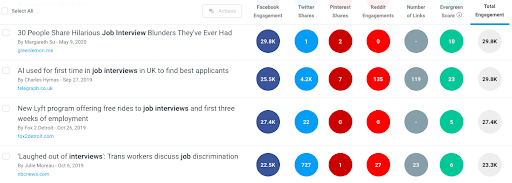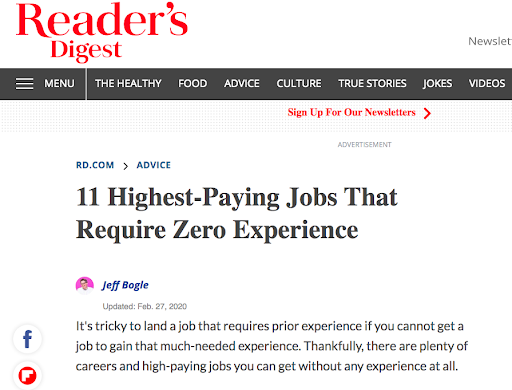Marketing Strategies
6 Stats that Prove the Importance of Product Videos for Ecommerce
Producing quality videos for your ecommerce site is hard, we know. Equipment is expensive, and specialists who know how to use that equipment cost even more. For that very reason, many ecommerce businesses will settle for photos and graphics just to get the job done.
These video marketing statistics show that video might just be an investment worth making. Sure, you’ll have to dig a little deeper into those pockets at first, but the results will return more than you dreamed.
Product Video Stats Marketers Need to Know
1. Video is the #1 content type used by marketers to sell products and services.
In our Not Another State of Marketing Report, marketers surveyed said that video is the top content type being produced in their content marketing programs, passing blog posts for the first time ever.
2. More than half of marketers invest in some sort of product-related video.
Also in the HubSpot report noted above, we found that nearly one quarter of marketers invested in product promotion videos, while nearly one fifth invested in product demos.
3. 73% more visitors who watch product videos will make a purchase.
Did you know that your products are more likely to sell if you create videos for them? There are quite a few reasons for this, which we’ll cover in the next points. The most important thing to note, however, is simply that videos for your products do prompt more purchases. That’s really the biggest and most important statistic you need.
4. 92% of marketers who use video say it’s an important part of their marketing strategy — up from 78% in 2015.
According to the late-2019 Wyzowl Survey that polled marketers about their video tactics, the number above was up from 78% in 2015. With a stat like this, there’s almost no question that marketers are finding video valuable and worth their investment.
5. 71% of consumers prefer video over other marketing content.
When consumers feel like they understand the products you sell, they’re more likely to take a chance on spending their money. Video clears up a lot of that confusion. Isn’t that what your marketing is all about, anyway? Answering questions with quality content?
6. 87% of Gen Z prefers branded videos or ads that show someone talking about a product.
Gen Z is one of the most digitally connected, and most budget-conscious, generations out there. And, as they reach full purchasing potential, you’ll want to keep their buyer’s journey behavior in mind.
As people in the age group research products, they’ll look for video-based ads, demos, tutorials, unboxings, or video reviews from influencers in order to see how well the product works and what it looks like in real life.
7. 55% of consumers use videos for purchase decisions.
While Gen Z most heavily relies on videos to research products, other age groups aren’t that different. More than half of people in all age groups use video to make a purchasing decision, according to 2019 data from Google.

Ultimately, authentic videos can lead to a greater sense of trust. By providing product videos, you give buyers quality information that doesn’t hide behind good angles and lighting. They understand the products they’re ordering and are happier with their purchases. With every great transaction, you build more and more trust.
Video Stat Knowledge Check
Think you know your video stats? Test yourself with the interactive quiz below to see how well you soaked in the details above. Try not to peak as you answer each question:
Creating an Engaging Product Video
A consumer who trusts your business is worth the investment you’ll make in product video production, isn’t it?
If the stats above have intrigued you, and your ready to invest in your first product video, consider what you’d like to try out first. Here are a few examples of product video formats:
- Demos/Tutorials: These videos walk through how the product or service works so a consumer can see how it functions in a real-world setting.
- Influencer Marketing Videos: If you don’t have the time to produce product videos, but do have some budget to work with, you could consider hiring a macro or micro influencer to post a video on their networks where they talk about or promote your product.
- Ads or Video Promotions: These videos are often shorter than tutorials. They merely highlight the product or service and all of it’s great features, but don’t necessarily need to go into full detail about how it works.
- User-Generated Content: If you have happy customers that are using your product or service, encourage them to film a video review or unboxing that you can then share publicly over social media or on your website. When others see a real person talking about success they had with your brand, they might be more willing to trust your offerings.
To learn more about video marketing, check out this handy ultimate guide.
Editor’s Note: This blog post was originally written in February 2016, but was updated in July 2020 for freshness and comprehensiveness.
Marketing Strategies
Generating The Spark For Memorable Virtual Experiences
/
/Now more than ever, marketers are competing for customers’ attention. With many professionals working from home, not only are you up against the internet, but you are angling for time in the midst of your customers’ workloads, emails, children, pets, laundry and whatever else is going on in their lives.
The potential for distraction is everywhere. So the primary goal needs to be getting and keeping your customer engaged, with limited time to achieve that.
I call this sustained engagement goal as “generating the spark” — creating an experience for a user that will ignite a lasting memory. But how do we transform traditional sales models into truly engaging, digital, interactive experiences that create a spark? Here are a few tips.
Brevity Is Your Friend
Traditionally, B2B companies focus on lots of details. In a first engagement, especially a digital one, the visitor needs to be able to connect very quickly to the value you provide. It’s critical to start with the digestibility of the message — an easy-to-understand story that shows logical progression. Don’t get caught up in the particulars at first. Remember that the minutia, which you may find important, probably doesn’t apply in your first interaction. Your goal is to get customers to return, so they can ask more detailed questions during the second engagement in their buyer journey.
Find Your Inner B2C
When we think of a virtual “connection,” we think of connecting with other people, not with content. But we make emotional connections with content, as well. The key ingredient to establishing a connection with content is creativity.
Traditionally, B2B marketers are on the conservative side when it comes to their content and customer engagement strategies. B2B buyers want to be entertained in the same way they are by consumer-focused marketing. B2B organizations can set themselves apart from the competition by embracing bold expression over the same old, conservative methods.
Bring Your Customer Into Virtual Environments
If you want your product to be remembered, you need to bring your buyer somewhere that will evoke emotion and feelings of connection. I like to categorize a virtual experience into three scenarios:
- Real, but impossible: Take your audience somewhere that exists in the real world but is not accessible because of physics. For example, if you are talking to the power of a processor or technical product specifications, you could drop your guest onto a motherboard or the working mechanism of a complicated device. This change of perspective transforms their perception of the products you sell, demonstrating unique value to the customer.
- The real world: You can recreate any place, but you have to know why you’re recreating it. The sky’s the limit in the virtual world and you can create a space that is widely inaccessible to the average person like an oil rig or medical laboratory.
- It’s OK to be abstract: Sometimes the value of a product or service can be conceptual, and that’s fine. This is an opportunity to place a user in a more creative or artistic space. If we can create a visually appealing environment — one that uses color, shape and captivating user interfaces in dynamic ways — the experience can elicit a visceral reaction, one that will create a lasting impression.
Creating the application environment is just the beginning of “generating the spark” for a buyer. As we move forward in this crazy new world, it will get increasingly more important to relate to users in creative and meaningful ways.
As Associate Director of Creative Services / Mixed Reality Experience Strategist at Kaon Interactive, Howard’s role is to innovate user interaction and engagement for applications for Fortune 500 companies. Howard’s passion for interactivity has helped Kaon’s customers tell complex stories while creating emotional connections and exciting their audiences.
Marketing Strategies
Instant messaging has taken over the world, but this is just the beginning
30-second summary:
- Chatbots will soon be ubiquitous in written business communication, and they present a paradox that flips everything consumers think they know about automation on its head.
- Customer input to a company is valuable information, and using messaging apps, customer feedback can also become actionable. By interacting with a bot, a customer is leaving an eternal record of their input, whatever it is, in a system that can read, analyze, and internalize the information.
- Furthermore, instant messaging apps and VoIP present the possibility of integrating video or phone calls into your communication. The combination of fluid written conversation and video has opened the door to digital transmission in many fields traditionally reserved for face-to-face interactions.
- Instant messaging has a fluidity that resembles that of spoken conversation. This fluidity is coming to good use now, especially for small businesses, which operate by one-on-one interactions, for which investments in big and bulky IT-systems are beyond superfluous.
The conversation surrounding the digitization of society has sounded in classrooms, newsrooms, and marketing departments for decades. During the pandemic, the process was accelerated as instant messaging came to the rescue, earning much-justified praise for helping people maintain connections even at a distance.
If there is one thing the process has taught us, it’s that the future has a way of sneaking up on us. So what will messaging look like, before we even know it?
The value of chatbots
Chatbots will soon be ubiquitous in written business communication, and they present a paradox that flips everything consumers think they know about automation on its head.
Generally, many people think the bots reflect over-automation and less-personalized service. Yet regular, human employees at corporations usually have very standardized, canned responses as well, offering only a veneer of personal service.
Chatbots reveal that the truly important part of the communication between a business and its customers is what the customers have to say, and bots’ role will become increasingly important.
Customer input to a company is valuable information, and using messaging apps, customer feedback can also become actionable. By interacting with a bot, a customer is leaving an eternal record of their input, whatever it is, in a system that can read, analyze, and internalize the information.
Instant messaging apps and VoIP provide an added layer of personalization
Furthermore, instant messaging apps and VoIP present the possibility of integrating video or phone calls into your communication. The combination of fluid written conversation and video has opened the door to digital transmission in many fields traditionally reserved for face-to-face interactions.
Tele-health, yoga-classes, and education are but a few examples of services ready to adapt, and they quickly managed to deploy instant messaging.
Experiences resembling one-on-one interactions, but still taking place at a distance, are essential and more useful than ever before. This will remain true well after COVID, as businesses and individuals alike become accustomed to the efficiency and effectiveness of such interactions.
Until now, messaging has mostly involved replicating real-world communication in the virtual world as seamlessly as possible.
But what if virtual communication were actually an improvement of physical communication? Imagine having a live call with someone across the globe who speaks a different language.
In real-time, the software can recognize the speech, anachronistically translate it, intelligently adjust for tone, prevent misunderstanding, or warn you that you might be stumbling into a cross-cultural faux pas.
The software could be intelligent and integrate with your calendar. As soon as you agree to meet someone for dinner, automatically, a reservation is made at your favorite restaurant and the event is added to your calendars.
This technology will be made available sooner than we think, and messaging apps will be the ones to implement them.
Instant messaging to play a major role in the evolution of communication
Messaging services will become the bridge between impersonal email and human touch. There is a reason messaging apps consume the most significant part of people’s internet use.
Whether consumers use social media platforms, dating apps, or office communication systems, it’s the messaging that gets people hooked.
Instant messaging has a fluidity that resembles that of spoken conversation. This fluidity is coming to good use now, especially for small businesses, which operate by one-on-one interactions, for which investments in big and bulky IT-systems are beyond superfluous.
Though it might not seem like it, society is still new to digital communications. The technology is in its infancy, and companies and individuals alike are still figuring out how to harness it in the best way.
By expanding its functionality and integrating instant messenger services to more facets of society, we improve the quality of the conversation between people, businesses, and institutions—one more step along the path to enhancing society with digital technologies.
Djamel Agaoua is the CEO of Rakuten Viber, one of the world’s largest mobile applications with 800+ million users worldwide, offering a range of features such as one-on-one chats, video calls, group messaging, social shopping, and updates. A veteran executive with a track record of growing innovative global techs, Djamel is a private investor and sought-after board member, advisor, and speaker.
The post Instant messaging has taken over the world, but this is just the beginning appeared first on ClickZ.
Marketing Strategies
Want media coverage? Make sure your content is emotional
30-second summary:
- Emotion is a pivotal component of great content.
- If you have an opportunity to create emotional content, you’re much more likely to be successful.
- A new Fractl study reveals what emotions are most common in highly-linked-to content in each industry.
- You should explore what emotions are already prevalent in your industry to gain new ideas and understand what already resonates with your audience.
- When pitching content to writers, highlight the key emotional takeaways so reporters glean them quickly.
Yes, content should be useful. In fact, nine times out of 10, it must be useful in order to make an impact. But emotion is pivotal too. Emotion can form a sense of connection between a reader and a story — between a reader and their place in the world. For this reason, emotion can sometimes carry an entire piece of content because it taps into our common humanity. How do you hit the right chords with emotional content? Here are tips on how to do that.
Sure, it sounds corny. But that doesn’t make it any less true. Emotion matters, and if you have an opportunity to create emotional content, you’re much more likely to be successful.
1. Understand which emotions resonate in your industry
Before jumping into content creation, it’s good to understand what works well in your particular niche. What content that’s been created has performed well, and why? What emotions are present in some of the most talked-about content?
In a recent Fractl study, we looked at more than 5,000 pieces of content that earned at least 25 backlinks. Then we explored which Facebook reactions were more prevalent in each content niche.
This breakdown provides a great overlook of what emotions are already prominent in your niche’s content. Look at how anger appears in sex/relationship stories while love appears often in travel stories.
Why do you think these emotions may be associated with your niche? What can you cover that hasn’t already been covered that taps into why people are upset or in awe?
To gain more industry insight, before creating content, I would:
- Pull out my customer personas. What emotions are tied to what they worry about? Struggle with? Seek out? Can I apply these emotions to content?
- Read my target publications’ content. Which articles are on the front page? Which got the most engagement? What emotions are featured in them?
- Check BuzzSumo to see what content is most engaged within my industry. Not only will this highlight certain emotions that are prevalent, but it’ll also let you know if an idea you have has already been covered in depth.
Take a look at some of the highly-engaged-with stories that appear on the BuzzSumo content search for “job interview”.

Just from this snapshot of stories, you can see multiple emotions: humor/laughter regarding funny anecdotes, fear that the job application process might be totally changed by AI, happiness at the kind gesture from Lyft, and contempt at discrimination taking place at interviews.
Perhaps honing in on one of these emotions can spark an idea. What else might people be afraid of regarding the job application process? What else are they angry about? Happy about?
When all else fails, capitalize on the feeling of surprise. Our research on viral emotions revealed that the most common emotion in viral images is “surprise”. People like to learn something new that’s unexpected. If your data reveals data points like this, make sure to highlight it in the project.
2. Identify which emotions to focus on in your content
When trying to come up with content ideas, ask yourself: What emotions are tied to this concept? What are the different circumstances people can encounter, and how do those circumstances make them feel?
For example, for our client The Interview Guys (a job interview advice portal), we considered the variety of issues that can come up related to work. One such idea that hadn’t been fully addressed, in our opinion, was burnout.
Burnout in and of itself is an emotional topic. It’s associated with stress, anxiety, and exhaustion. After surveying people about burnout, we earned coverage on Inc., Yahoo Finance AU, and International Business Times.

But not every idea will be as emotionally straightforward. Perhaps you have an instinct that analyzing a certain data set would yield interesting results.
Push yourself to identify
What would make those results compelling? What insights might this data help us gain, and what emotions are involved with these insights?
For example, in a separate project for the same client, we thought about identifying jobs that pay well that don’t require years of education. What we’d end up with is a list of jobs and what they’d pay.
On the surface, this may not seem too emotional. But let’s consider the layers involved here:
- Less schooling means less stress, less debt, and less pressure.
- The potential to make a good salary provides hope.
- Struggling to find a job with little to no experience can give someone a lot of financial and emotional anxiety.
- Why would people care about this information in the first place? They’re looking to switch jobs. For whatever reason, they’re dissatisfied.
So you have stress, anxiety, hope, and dissatisfaction as some examples of emotions tied into this list of jobs. It’s not just a list anymore, is it?
Call upon these feelings every time you make a decision about the project. It’ll help keep you focused on the real soul of the story.
3. Pitch the emotional angles
When you can identify these emotional elements, you’ll also know how to better promote the idea.
We pitched the high-paying-jobs project to publications. Take a look at some of the coverage.

Source: Reader’s Digest
Reader’s Digest opens with the dilemma of not being able to find a job because you don’t have enough job experience yet. They’re tapping into a common, shared frustration people have, and by starting the article this way, they’re immediately putting the reader in a frame of mind to connect emotionally with the content.

Source: MarketWatch
This headline taps into the hope angle; they’re essentially saying, you don’t have to be the typical tech person to make a lot of money with little experience.
When you pitch writers, make sure to include the emotional data points and angles prominently. Include bullets of the most impactful takeaways so the reporter doesn’t have to dig through the data to understand why it matters and why their audience will care.
And don’t do the same thing for every publisher. Consider their particular audiences and what they care about, and then tailor your data points to speak to those readers.
Conclusion
Data is only as powerful as the story it tells, and all of the best human stories are packed with emotion. In every stage of your content creation process, from ideation to design to promotion, keep the emotional components in mind and center them.
Amanda Milligan is the Marketing Director at Fractl, a prominent growth marketing agency that’s worked with Fortune 500 companies and boutique businesses.
The post Want media coverage? Make sure your content is emotional appeared first on Search Engine Watch.
-
 Business3 weeks ago
Business3 weeks agoBernice King, Ava DuVernay reflect on the legacy of John Lewis
-
World News2 weeks ago
Heavy rain threatens flood-weary Japan, Korean Peninsula
-
 Technology2 weeks ago
Technology2 weeks agoEverything New On Netflix This Weekend: July 25, 2020
-
Finance3 months ago
Will Equal Weighted Index Funds Outperform Their Benchmark Indexes?
-
Marketing Strategies7 months ago
Top 20 Workers’ Compensation Law Blogs & Websites To Follow in 2020
-
 World News7 months ago
World News7 months agoThe West Blames the Wuhan Coronavirus on China’s Love of Eating Wild Animals. The Truth Is More Complex
-
Economy9 months ago
Newsletter: Jobs, Consumers and Wages
-
 Finance8 months ago
Finance8 months ago$95 Grocery Budget + Weekly Menu Plan for 8

